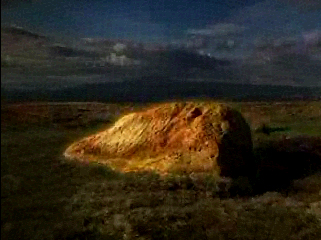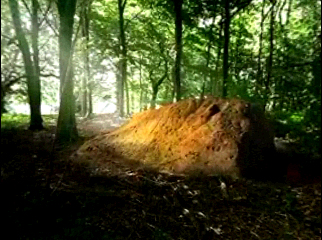

Figure 13: The Badger Stone looking north across the stone towards Snowden Carr (left).
Figure 14: An artist's rendition of a 'shamanic' view of the Badger Stone carvings (right).
Click on images to view panoramas.


Figure 13: The Badger Stone looking north across the stone towards Snowden Carr (left).
Figure 14: An artist's rendition of a 'shamanic' view of the Badger Stone carvings (right).
Click on images to view panoramas.
The Badger Stone (figure 13) is arguably the most beautiful stone in the Mid-Wharfdale group, both in its position and form. The panorama image of this stone has, therefore, also been used for the application of more extensive image processing to investigate 'shamanic vision' (figure 14).
Artistically the work on both this and the Barnishaw images has been quite successful, but much more work needs to be done. Of all the sites discussed in this article, this is the one that will need to be taken further into realistic portrayal in 3D to investigate both the unconscious mode of perception discussed above, and the shamanic vision.
Work has started on both these themes. A rather crude 3D representation shows the potential for integrating 3D and panoramic views that might be thought of as representing place and space. An attempt has also been made at transposing the Badger stone from its present, open moorland situation to a wooded environment (figure 15). This is obviously inaccurate in terms of species and woodland management, but it provides a dramatic example of this technique.

Figure 15: The Badger Stone digitally transposed to a possible wooded setting
Click on image to view panorama.
© Internet Archaeology
URL: http://intarch.ac.uk/journal/issue8/larkman/10a.html
Last updated: Mon Sep 25 2000